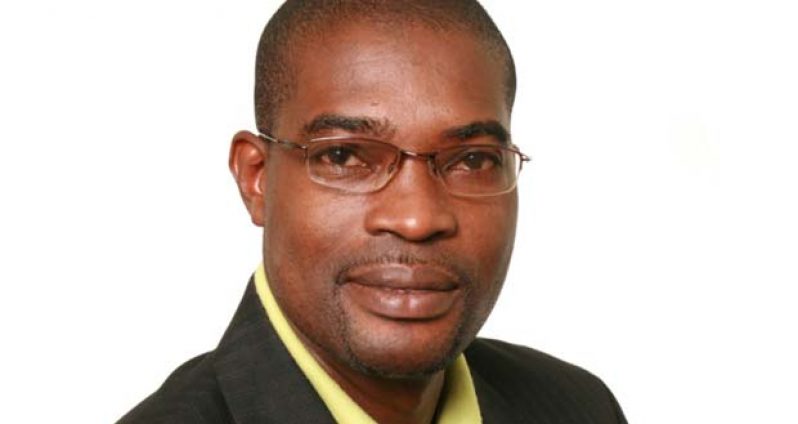— of efforts to develop the renewable energy sector
By Alva Solomon
GOVERNMENT is open to establishing Private/Public Partnerships for renewable energy projects since it views this method as an effective model to develop the energy sector.This is against the backdrop of a number of projects being pursued this year in the renewable energy sector. Long-term projects are being actively pursued by government with a five-year timeline for the more viable of the larger hydro-electric projects under consideration.
This was indicated on Tuesday when Minister of Public Infrastructure David Patterson and personnel from the Ministry of Public Infrastructure (MPI) and agencies under its umbrella, appeared before the Natural Resources Committee of the National Assembly.
“All the projects that I mentioned here except those involving the IDB (Inter-American Development Bank) are open Public/Private Partnerships,” he told the committee, chaired by Opposition Member of Parliament (MP) Odinga Lumumba.
Other members of the committee who were present at Tuesday’s meeting included Minister of State Joseph Harmon and other government MPs, namely Jermaine Figueira and Audwyn Rutherford.
Opposition MPs Pauline Sukhai and Yvonne Pearson were also in attendance.
Figueira, who questioned Patterson on the issue of private partnerships, also asked whether persons within the vicinity of projects can partner with the government. Patterson noted that the government promotes local investment and to this end, if anyone is interested, he/she will be considered once the requisite criterion has been met.
Patterson mentioned a range projects which will be pursued this year. These include sustainable energy projects funded by international credit facilities, including the IDB.
He said there will be the insulation of inter-connected solar PV (photovoltaic) systems in several buildings and these are categorised as demonstration projects.
The facilities include the St Rose’s High School; the St Joseph High School; Queen’s College; the MPI; the Georgetown Public Hospital Corporation (GPHC); and the Government Technical Institute (GTI).
On the wider scope, he said that this year the government is pursuing its national energy and implementation plan.
Patterson said the process is expected to commence in April 2016, and it will include key stakeholders of government and the private sector.
He said that a Steering Committee has been established and it is expected to follow clear policy guidelines in its mandate to achieve the requisite policy objectives.
PRELIMINARY WORK
The minister noted that the MPI and the Guyana Energy Agency (GEA) has commenced preliminary work on identifying hydro sources to match local demand and both entities are examining the opportunities for financing development of micro hydro projects for hinterland electrification.
He explained that there is a study being updated for the Guyana power-generation system expansion, from an initial study commissioned by the IDB in 2004.
He said the update is intended to appraise the future electricity demand scenario of Guyana, particularly the Demerara/Berbice interconnection system and the Linden area.
It identifies the best least-cost option for electricity demand. He said the study update will consider five high-capacity electricity projects with various capacities.
They include one at Kamaira (103 MGW); Tiger Hill (15 to 20 MGW); Tumatumari (up to 34 MGW); Kumaro (up to 86 MGW); and the Amaila Falls Project (165 MGW) .The draft for the study has been submitted to the MPI, he noted.
In addition, Patterson said the government has re-engaged a Brazilian company which had placed interest in the prospects of establishing a hydro project in the Mazaruni. He said discussions have been undertaken through high-level meetings, and according to him, “they are still extremely interested in that proposal”.
He said the last time both parties met was in April 2015 and a pre- feasibility analysis was submitted. A Memorandum of Understanding (MoU) was also established with the company.
“There are two sites along the Mazaruni,” he told the committee.
He said the company can provide up to 3000 MGW of electricity, with an 85 per cent supply guaranteed for the Brazilian Government, five per cent for Guyana and the remainder will be under the purview of the Guyanese authorities, if it is needed.
“While there were some economic challenges at the time of signing of the MoU, the Brazilian financing agency has [the]financial capacity to commence the work, unfortunately, Brazil has some economic challenges,” he said. He said the company in question is seeking to engage partner support for the project.
Patterson spoke of the contentious Amaila Falls project, noting that its intent is intact; however, it is the financial model used for the project’s establishment and futuristic plans which is being seen as faulty. The IDB is currently reviewing the project.
Patterson had told the committee earlier that the government is looking at the development of the energy sector with less dependency on fossil fuels and with a renewed interest on the development of the renewable energy sector.
He then justified the intent of the regime in pursuing the projects discussed at the meeting. He said next year the plan is to institutionalise a framework of the government’s energy policy.



.jpg)








